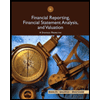
a
Concept Introduction:
Debt versus equity financing: A decision about funding a project is a very important decision, companies generally have two types of financing options, equity financing, and debt financing, the company can any one of these or a combination of both. Both types of financing have a few advantages and limitations, most significant advantage among all is equity financing does not require repayment and debt financing does not require giving up a portion of ownership.
The net income for each of the given options.
b
Concept Introduction:
Debt versus equity financing: A decision about funding a project is a very important decision, companies generally have two types of financing options, equity financing, and debt financing, the company can any one of these or a combination of both. Both types of financing have a few advantages and limitations, most significant advantage among all is equity financing does not require repayment and debt financing does not require giving up a portion of ownership.
The return on equity under each of the given options.
Want to see the full answer?
Check out a sample textbook solution
Chapter 10 Solutions
FINANCIAL & MANAGERIAL ACCOUNTING
- Don't use ai. A company has the following data: Cash: $50,000Accounts Receivable: $30,000Inventory: $60,000Current Liabilities: $70,000a) What is the company’s acid-test ratio?b) Is the company in a strong liquidity position based on this ratio?arrow_forwardQuestion 5:A company has the following data: Cash: $50,000Accounts Receivable: $30,000Inventory: $60,000Current Liabilities: $70,000a) What is the company’s acid-test ratio?b) Is the company in a strong liquidity position based on this ratio?arrow_forwardQuestion 5: Acid-Test RatioA company has the following data: Cash: $50,000Accounts Receivable: $30,000Inventory: $60,000Current Liabilities: $70,000a) What is the company’s acid-test ratio?b) Is the company in a strong liquidity position based on this ratio?arrow_forward
- Question 4: Depreciation (Straight-Line Method)A company purchases machinery for $50,000. The estimated salvage value is $5,000, and the useful life is 10 years. a) Calculate the annual depreciation expense.b) What will the book value of the machinery be after 4 years?arrow_forwardInventory Valuation (FIFO Method)A company had the following inventory transactions during the month: Beginning inventory: 100 units @ $10 eachPurchase: 200 units @ $12 eachPurchase: 150 units @ $13 eachAt the end of the month, 250 units remain in inventory. Calculate the value of the ending inventory using the FIFO method. explainarrow_forwardNeed assistance without use of ai.arrow_forward
- Depreciation (Straight-Line Method)A company purchases machinery for $50,000. The estimated salvage value is $5,000, and the useful life is 10 years. a) Calculate the annual depreciation expense.b) What will the book value of the machinery be after 4 years?arrow_forwardA company has the following data: Cash: $50,000Accounts Receivable: $30,000Inventory: $60,000Current Liabilities: $70,000a) What is the company’s acid-test ratio?b) Is the company in a strong liquidity position based on this ratio?arrow_forwardDon't want AI answerarrow_forward
 EBK CONTEMPORARY FINANCIAL MANAGEMENTFinanceISBN:9781337514835Author:MOYERPublisher:CENGAGE LEARNING - CONSIGNMENT
EBK CONTEMPORARY FINANCIAL MANAGEMENTFinanceISBN:9781337514835Author:MOYERPublisher:CENGAGE LEARNING - CONSIGNMENT Cornerstones of Financial AccountingAccountingISBN:9781337690881Author:Jay Rich, Jeff JonesPublisher:Cengage Learning
Cornerstones of Financial AccountingAccountingISBN:9781337690881Author:Jay Rich, Jeff JonesPublisher:Cengage Learning Intermediate Financial Management (MindTap Course...FinanceISBN:9781337395083Author:Eugene F. Brigham, Phillip R. DavesPublisher:Cengage Learning
Intermediate Financial Management (MindTap Course...FinanceISBN:9781337395083Author:Eugene F. Brigham, Phillip R. DavesPublisher:Cengage Learning Financial Reporting, Financial Statement Analysis...FinanceISBN:9781285190907Author:James M. Wahlen, Stephen P. Baginski, Mark BradshawPublisher:Cengage Learning
Financial Reporting, Financial Statement Analysis...FinanceISBN:9781285190907Author:James M. Wahlen, Stephen P. Baginski, Mark BradshawPublisher:Cengage Learning




